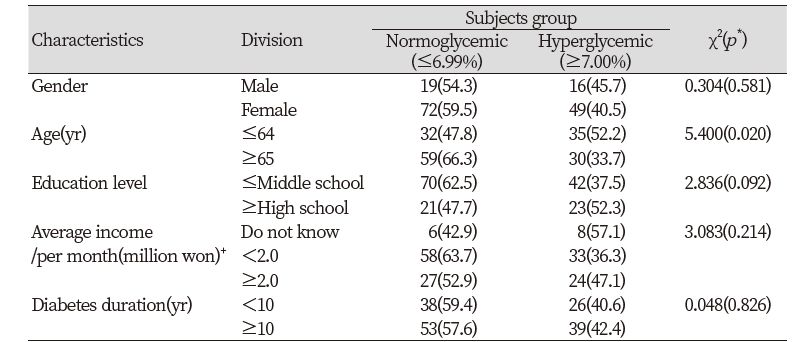Abstract
Objectives: This study aimed to analyze the association between self-assessed periodontal symptoms and glycated hemoglobin levels in patients with type 2 diabetes. Methods: This cross-sectional study involved 156 patients with type 2 diabetes who were aged 50 years or older. Structured questionnaires were used to investigate the self-assessed periodontal symptoms of the patients. The glycated hemoglobin test was performed to evaluate their long-term blood glycemic control. Chi-square test and logistic multiple regression were performed to analyze the factors associated with glycated hemoglobin levels. Results: Compared with patients aged 65 years and above, more patients aged 64 years and below showed poor glycemic control (p=0.020). Further, compared with patients without self-perceived gingival bleeding and halitosis, more patients with these two conditions showed poor glycemic control (
Figures & Tables



